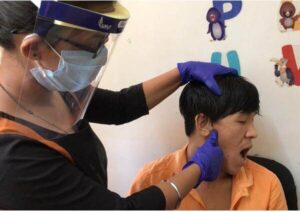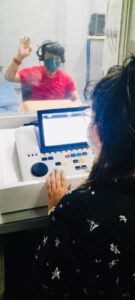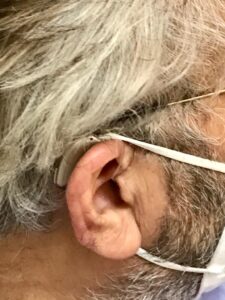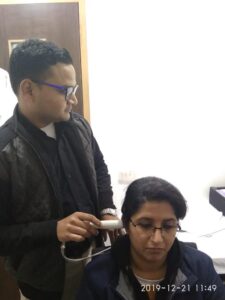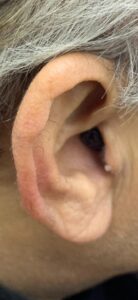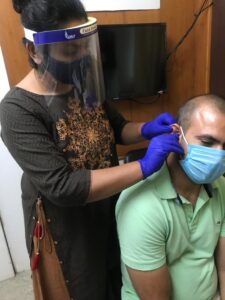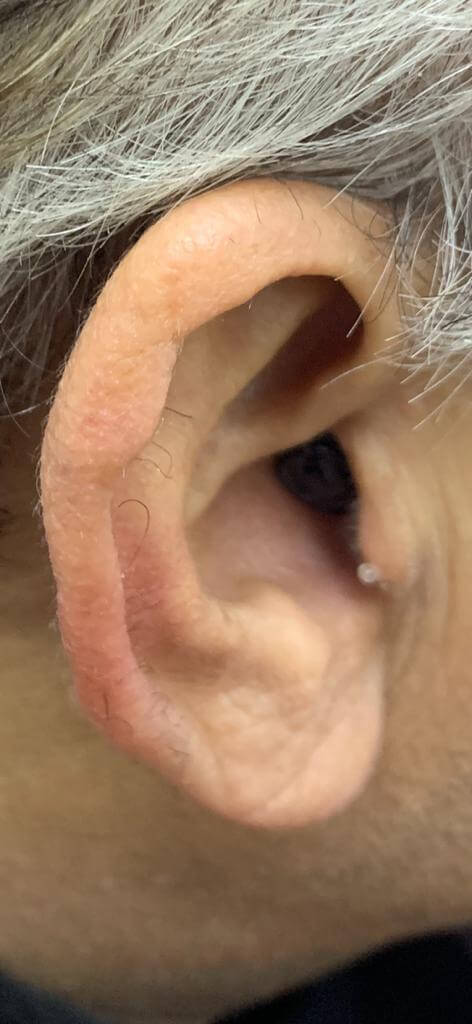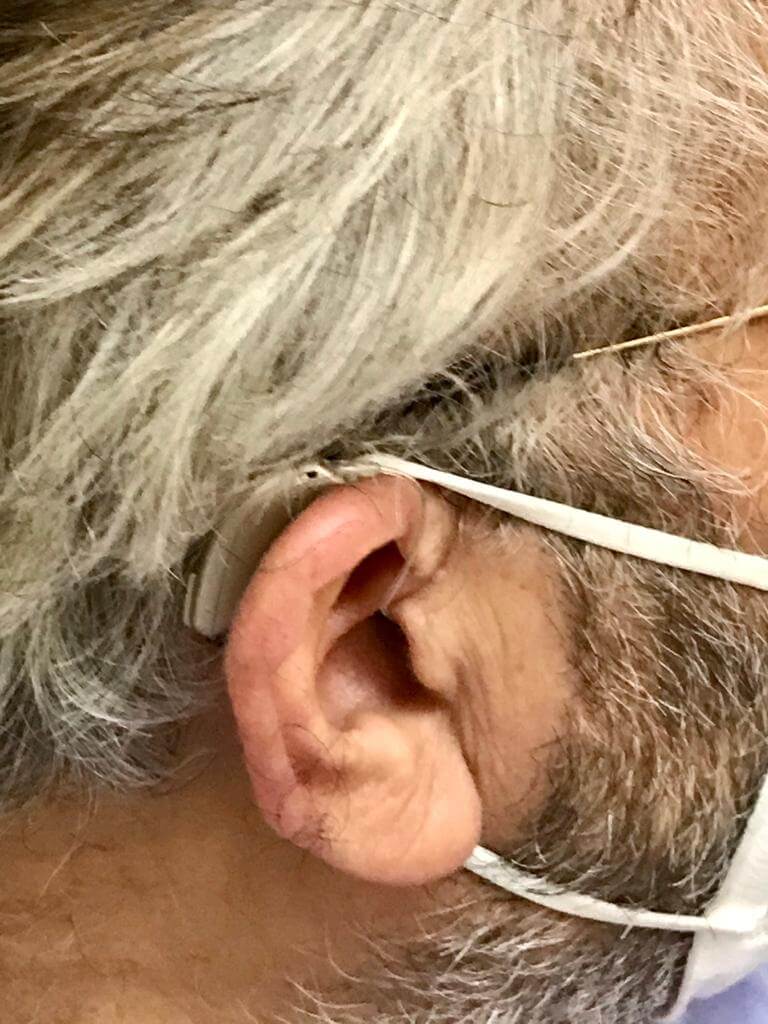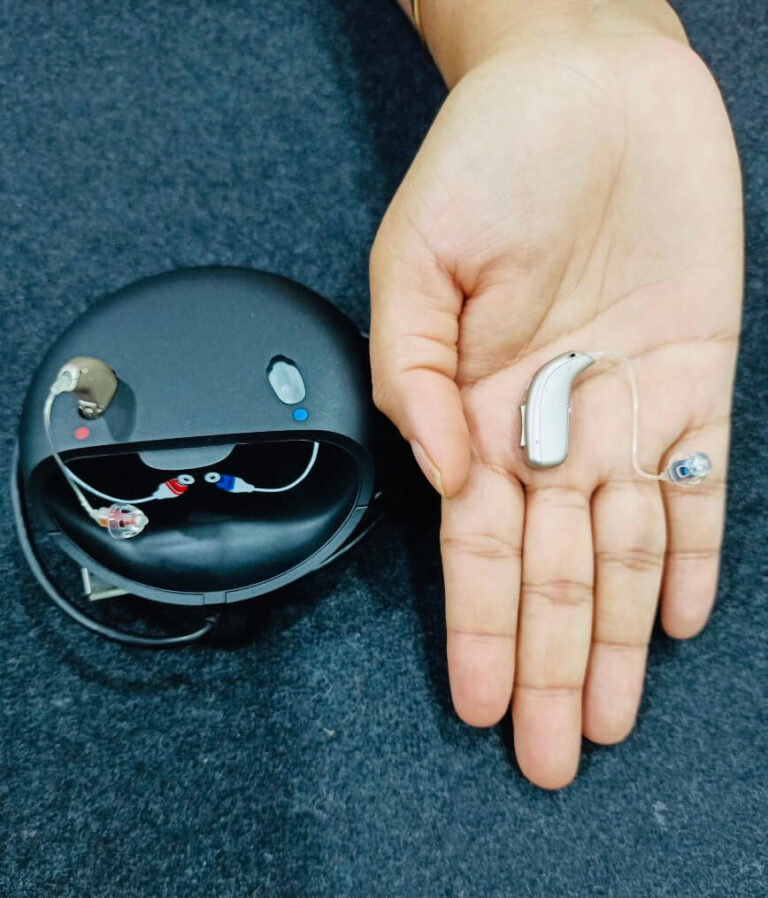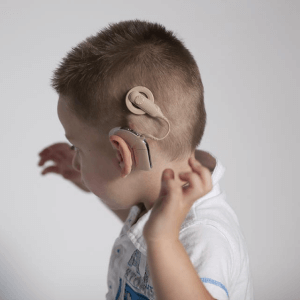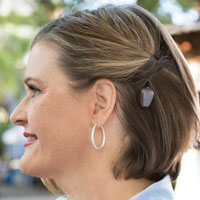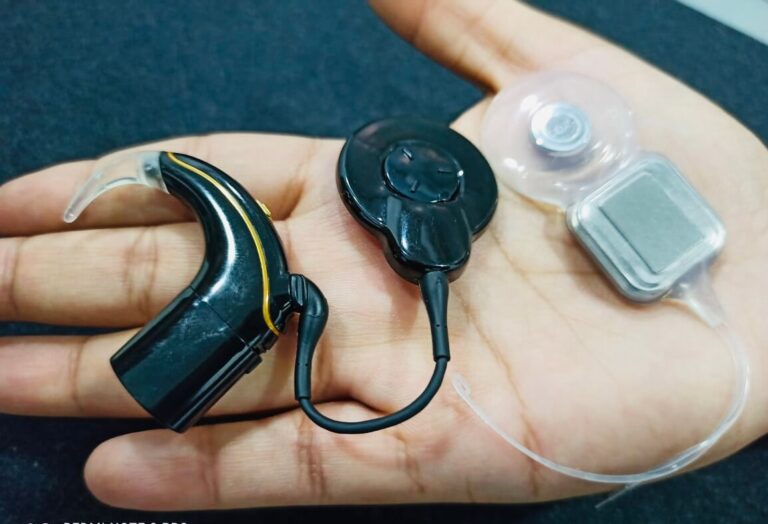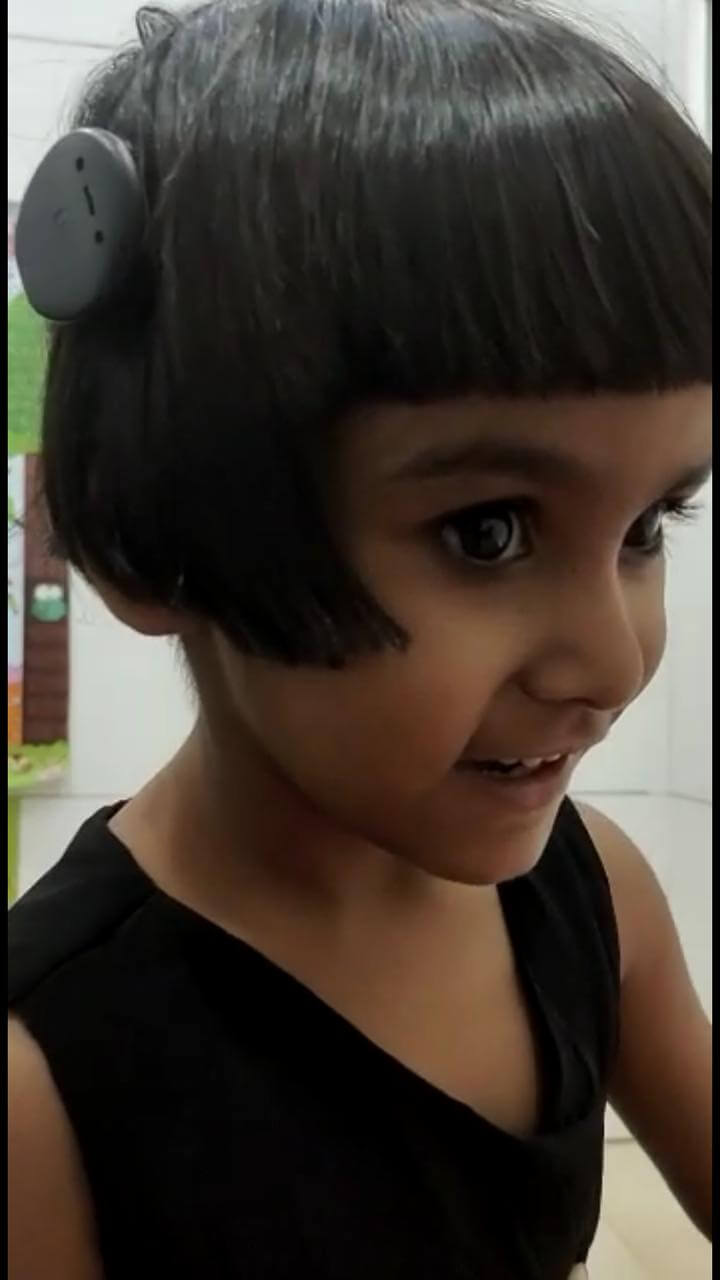Hearing Aids, Speech Therapy, Cochlear Implant
Life is better
in full volume.
V-Listen Clinic is well equipped with Doctors, RCI registered professionals and state of the art technology in field of Audiology and Speech Therapy
Free Consultation
Hearing loss in adults is usually slow progressing. Most people with a hearing loss do not even complain of an active problem in hearing. Their primary concern remains in difficulty understanding words due to selective hearing loss for some sounds.
With the help of known context and focusing on the conversation, understanding of word becomes easy. At other times sentences may have to be repeated a few times before one may understand the meaning. An Untreated hearing loss has been linked with Alzheimer’s Disease, Dementia, Tinnitus in the elderly, apart from having an increased risk of falls, diabetes, depression, anxiety and social aloofness.
Therefore, one must get regular Hearing Check-ups, especially for a senior Citizen, to detect the early signs of hearing loss and give the right solution timely.
1. Prevalence of hearing loss in adults
According to WHO (2018) data, the prevalence of hearing impairment (HI) in India is around 67% at age of 60 years. That means every 6-7 elderly out of 10 will have significant hearing loss.
2. Types and degree of hearing loss
Types – Sensorineural, Conductive, Mixed
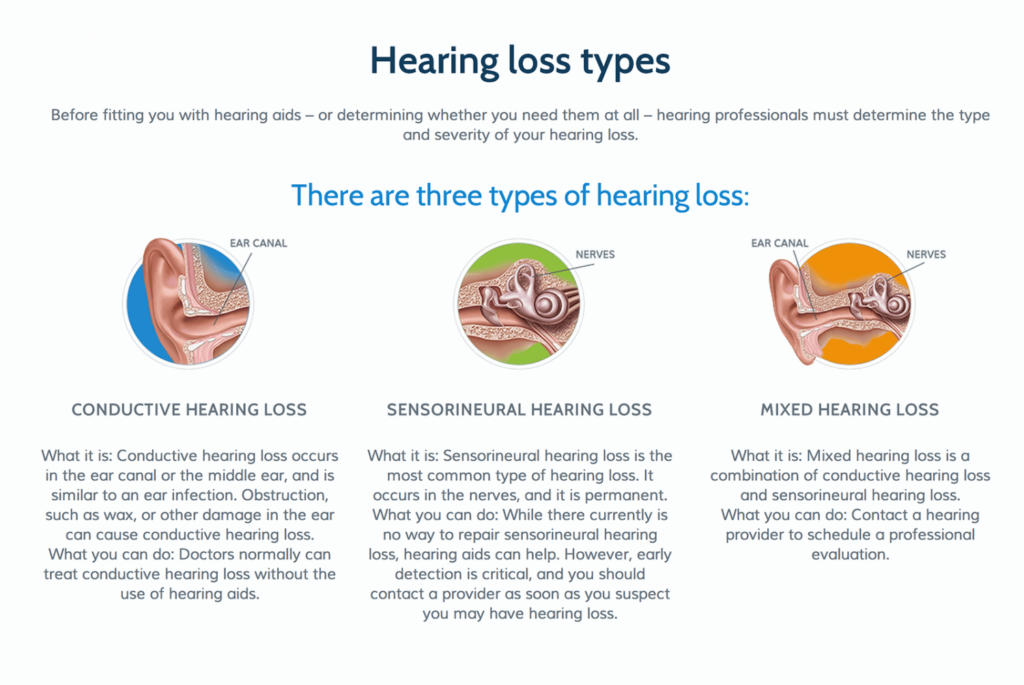
Degree of Hearing Loss
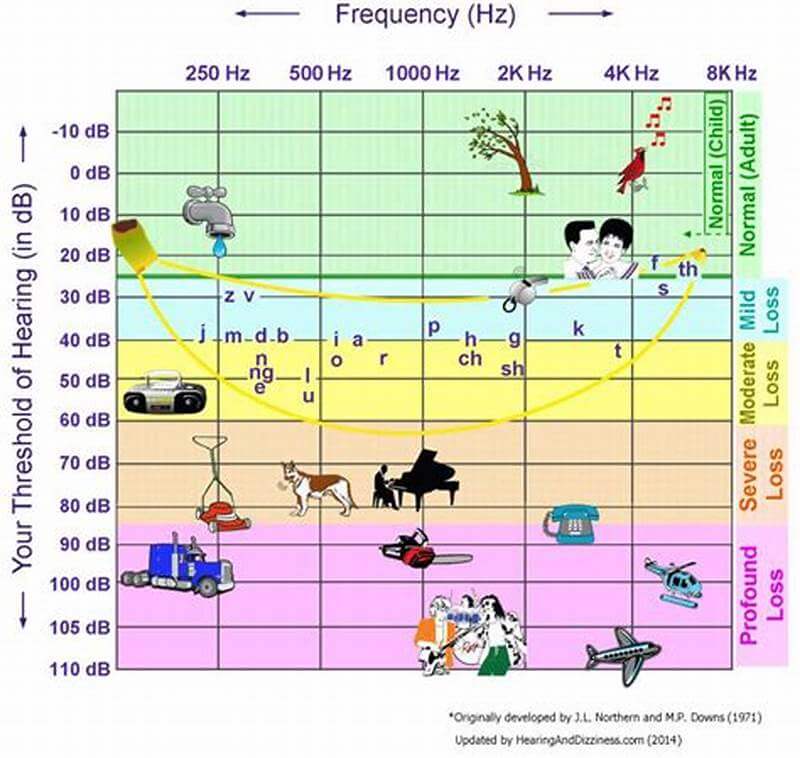
3. Self Assessment Checklist you can use to note if you have symptoms of hearing loss:
- You get to know that someone is talking but find difficulty understanding words.
- Certain sounds might appear overly loud.
- Difficulty following conversation in noisy Surroundings like restaurant, market.
- Difficulty in following a conversation while walking alongside the speaker.
- Difficulty hearing the difference between “s”, “sh”, “f” and “th” sounds.
- Ringing in the ears- Tinnitus
- Turning up the volume on the television or radio louder than usual.
- Asking people to repeat themselves
- Vertigo and dizziness are often early signs of inner ear damage.
- Getting irritated with no apparent reason by the end of the day.
NOTE: If you have 4 or more questions answered YES, you need to get your hearing assessed by Audiologist
4. How to test
- PTA – Pure tone Audiometry is the primary hearing test used to identify an individual’s hearing threshold levels, enabling determination of the degree, type and configuration of a hearing loss and thus providing a basis for diagnosis and management.
- Impedance test– To rule out middle ear status. It mainly helps in identifying a line of Treatment.
- Hearing aid fitting and program– Once the hearing loss falls into the category of Sensorineural (untreatable) loss, We then recommend Hearing Aid Fitting.
- Speech Audiometry– Speech audiometry is a Speech Test used as a fundamental tool in hearing loss assessment. Together with pure-tone audiometry, it can aid in determining the degree and type of hearing loss. Speech audiometry provides information on word recognition and about discomfort or tolerance to speech stimuli. Commonly referred to as SAT, SRT, WRS or SDS, This test is conducted in a sound-treated room with a Speech Audiometer using a standardized Wordlist.
- Special Test- TDT, SISI, ADLD
5. Selecting a Hearing Aid Device:
- Acoustics: Initial Selection is made based on the representation of Hearing loss and Auditory needs (auditory environment, in which the person remains in most of the day time) of the person.
- Technology: Secondary selection is filtering out the selected devices (in the previous step) based on the required technical features like- number of Channels, Noise Cancellation, Speech Rescue, Connectivity features. It is essential to keep in mind that Hearing Losses are usually progressive; hence, the device should have enough headroom to fit future requirements as per the changing loss.
- Cosmetic Appeal: The third consideration is given to the casing of the technology, which becomes the wearing option based on where it is put while using. For example, CIC, ITC, ITE, RIC, BTE, Body-worn.
Once the device is selected, the trial is done to see if the selection meets the Listening preferences of the person wearing it. Two people with similar loss might have different preferences to the sounds. It is precisely like the preference of music is different to everyone.
Ear impression– Process of customizing Hearing aid or for making an ear mould of the unique size.
Hearing Aid Programming: Hearing Aids, once fitted, needs to be rechecked and programmed over a period of time to gain maximum benefit from the device and also equipping the patient with necessary information on handling the device (to increase the life of the device). For this purpose, follow-up checks are recommended and scheduled for over six months.
Auditory Training Sessions-The goal of auditory training is to develop the ability to recognize speech using the auditory signal and to interpret auditory experiences. It is usually recommended for people who had hearing loss for a long time and now fitted with a Hearing Aid.
6. Tinnitus
Tinnitus is the perception of noise or ringing in the ears. A common problem, Tinnitus affects about 15 to 20% of people. Tinnitus isn’t a condition itself — it’s a symptom of an underlying condition, such as age-related hearing loss, ear injury or a circulatory system disorder
- Tinnitus Assessment and Sound Therapy
All patients have an Individual Management Plan (IMP)produced jointly with patients, family and caregivers.
The following should be mandatory within the IMP;
· Access to sound therapy(e.g. bedside sound generators), hearing aids, combination hearing aids and novel devices.
- Tinnitus Masker
These masker devices use soothing natural sounds such as ocean surf, rainfall or synthetic sounds such as white noise, pink noise, or brown noise to help the auditory system become less sensitive to Tinnitus and promote relaxation by reducing the contrast between tinnitus sounds and background sound.
- Hearing Aid with Tinnitus Masker
A tinnitus Masker is an electronic hearing aid device that generates and emits broad-band or narrow-band noise at low levels, designed to mask the presence of Tinnitus. … For individuals suffering from both hearing loss and Tinnitus, the masker and the hearing aid can operate together as one instrument.
7. Other Treatment Option
Audiologist And Speech-Language Pathologists (ASLP) are certified to diagnose the above. Medication will help only if the problem is within the middle ear; Otherwise, an implant and a hearing aid is the only solution for hearing loss.
- Cochlear Implant
A cochlear implant uses a sound processor that you wear behind your ear. A transmitter sends sound signals to a receiver and stimulator implanted under the skin, stimulating the auditory nerve with electrodes that have been threaded into the cochlea.
- BAHA ( BONE ANCHORED HEARING AID)
Baha is a technology that combines a sound processor with a small titanium fixture implanted behind the ear. This unique system allows the bone to transfer sound to a functioning cochlea rather than via the middle ear – a process known as direct bone conduction.
Speech and Hearing
What our Patients say
Hearing loss and Tinnitus Treatment
Cochlear Implant -Switch On for Nigerian Baby
Adult Stammering Therapy
Free Consultation

